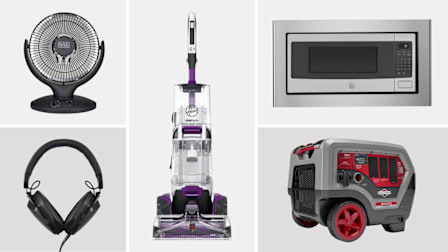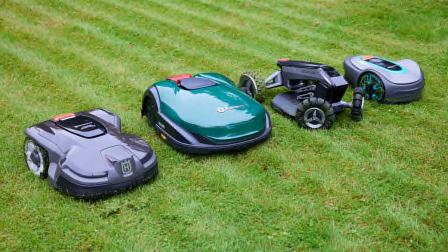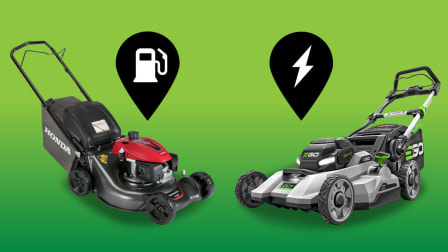Easy Tips to Grow Your Best Garden
Reusing packaging, sharing seeds with neighbors, and savvy cultivation methods can get you great results
When you shop through retailer links on our site, we may earn affiliate commissions. 100% of the fees we collect are used to support our nonprofit mission. Learn more.

Are you planting vegetables in a “victory garden” this year? Trying for the first time to add flowers and shrubs for more curb appeal? If so, you’re part of a growing movement.
Due to the pandemic, we Americans are giving our green thumbs a workout. Sales of gardening supplies are up 169 percent from the same period last year, according to Criteo, an internet marketing and advertising company that tracks consumer trends. Google searches for “vegetable seeds” were five to six times higher in early April than during the same period over the past five years.
To help you grow a beautiful, bountiful garden, we gathered advice from experts in the field on what to plant and how to keep everything healthy all summer long. We also highlight lawn mowers, string trimmers, and even cordless drills that will come in handy for keeping your yard in tiptop shape.
Give Plants a Good Start
Grow seedlings yourself. Starting seeds—whether for zucchini or zinnias—is much cheaper than buying transplanted plants at the nursery. And it’s easier than you think. First, make a seed starter with compost, peat moss, and a drainage aid like perlite, using this recipe from Oregon State University.
Be Careful With Planting
Start small. Buy shrubs, trees, and flowering plants a bit smaller than what you ultimately want. “A smaller plant experiences less stress when transplanted, and establishes its roots faster,” says Daryl Beyers, coordinator of the gardening certificate program at the New York Botanical Garden in New York City. You’ll also save money and expend less effort planting a smaller specimen.
Match the container to the plant. If you’re planting in pots, save natural clay pots of terra cotta, which don’t hold moisture well, for plants like lavender and rosemary that like dry soil. Stick to plastic, resin, or a composite—such as concrete and fiberglass—for moisture-loving plants like basil and impatiens.
You can pot a plant in anything from a watering can to a coffee tin; just be sure there’s a hole in the bottom for drainage. Use potting mix for the soil, which retains moisture better, Shmurak advises.
Pack the pot properly. With large containers—2 feet or taller—you can ensure proper drainage and use less potting mix by adding drainage materials in the bottom third of the pot. Crumbled plastic foam packaging or empty plastic seedling containers turned upside down work well.
Most plants, like flowers and herbs, don’t grow deep roots, Beyers says, so substituting drainage material for potting mix in the bottom of a tall pot won’t be a problem. With small pots, just add a few stones or marbles before adding potting mix.
Don't Forget the Maintenance
Ward off animals. If you’re plagued by squirrels, groundhogs, or other critters that may eat your growing vegetables, try tying tin or aluminum pie plates to sticks in the garden beds, which then rattle in the wind to scare them off, Beyers recommends. Or fence off your edibles with old chicken wire on stakes. “But be sure to bury the wire a foot deep to keep out burrowers,” he says.
Depend on compost. Simply adding some compost to the soil around the base of vegetables, herbs, and other plants in your beds each season keeps the soil fertile and moist. You want enough to create a 2-inch layer on top of new beds.
You can make your own compost by using food scraps and dried leaves, grass clippings, and sticks. Put them into a composter (sold online from around $35 to more than $350) or directly on the ground. All you have to do is aerate it by turning over the mixture. You’ll need to do this once a week for a compost pile, or every three or four days if you have a composter.
To make this job easier if you have a compost pile, attach a “bulb augur” (about $20) to a cordless drill, insert it into the mix, and run it at a low setting, says John Galeotafiore, head of home-improvement testing at CR. (For details on the best cordless drills in Consumer Reports’ tests, see below.)
Spread homemade mulch on beds. In the first year that you plant new shrubs, trees, or perennials, lay down mulch over your 2-inch layer of compost. It holds moisture and blocks weed growth. You don’t necessarily have to buy mulch—shredded newspaper, dry leaves, chipped sticks and twigs, straw, or grass clippings will do. Just remove grass clippings from your mower’s collection bag right after you mow so that they don’t begin to decompose inside the mower, says David Trezza, who leads CR’s lawn mower testing.
Don't wait to weed. Weeding early gives plants more room to grow—and crowd out the weeds in the first place, Beyers says. “If you keep up with it early in the season, you’re not weeding so much in June and July,” he adds.
Later in the season, use mulch to control weeds, says Kemper. Or consider spraying vinegar on individual weeds. “Then let the sun shine on the weed and that will kill it,” he says. (To weed an area before planting, temporarily lay corrugated cardboard anywhere in your garden where you want to squelch all growth, Beyers advises. But only use cardboard that has no shiny outer coating.)
Tools for Maintaining Your Garden
Check out these recommended models of walk-behind lawn mowers, string trimmers, and cordless drills to help make your yard and garden upkeep easier throughout the growing season.
Top-Rated Walk-Behind Lawn Mowers
Gas push mowers are the most popular mower variety; they are good picks for medium-sized lawns of a half-acre to an acre. Battery-powered, self-propelled mowers are the second-most popular and are suitable for lawns of one-third acre or less.
Top-Rated String Trimmers
Gas-powered trimmers are the best choice for large properties because you can keep going as long as you refuel them. Battery-powered models often cut as well as gas, but they run only for about a half-hour fully charged. Below, we highlight one of each type.
Top-Rated Cordless Drills
For a job like stirring compost with a bulb augur attachment, you can use either a heavy-duty or general-use cordless drill like the ones below.
Correction: This article, originally published on May 29, 2020, has been updated to indicate that crops such as cherry tomatoes and leafy greens do require consistent watering and that they do not require trimming.




















